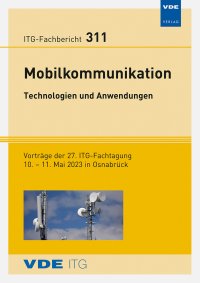Desynchronized Channel Access with Carrier Sensing for large-scale wireless IoT Networks
Conference: Mobilkommunikation - 27. ITG-Fachtagung
05/10/2023 - 05/11/2023 at Osnabrück
Proceedings: ITG-Fb. 311: Mobilkommunikation – Technologien und Anwendungen
Pages: 7Language: englishTyp: PDF
Authors:
Tuchscherer, Tobias; Baumgartner, Andreas; Bauschert, Thomas (Chair of Communication Networks, TU Chemnitz, Germany)
Abstract:
Internet-of-Things (IoT) services frequently depend on data collected by a large number of battery-powered, wireless end devices. Therefore in the last couple of years beyond mobile network standardization (e.g. 3GPP), specific low-power wide-area (LPWAN) wireless technologies, e.g. LoRaWAN or Sigfox, have been proposed to cope with the requirements of large-scale, low-power IoT use cases and services. These technologies usually apply ALOHA-like medium access control mechanisms in order to keep power consumption low. For LPWAN, different medium access mechanism improvements have been proposed with the target to increase the overall throughput and efficiency of the radio interface as well as to further decrease power consumption by reducing medium access collisions. Deterministic medium access mechanisms with central coordination applying dedicated time-scheduled transmission slots for end devices have been studied as well but they showed only limited benefits due to the significant control plane overhead. Besides these approaches, a simple decentralized bio-inspired medium access desynchronization method has been proposed - however with limited practical applicability. In this paper, we discuss IoT traffic characteristics and large-scale low-power wireless IoT network requirements and address the challenges of advanced medium access mechanisms beyond ALOHA. We investigate the practical limitations of carrier sensing, random medium access and medium access desynchronization methods and algorithms in the context of LPWAN. Based on that, a novel method for desynchronized channel access is proposed, which takes advantage of legacy medium access mechanisms and known IoT traffic characteristics and applies a decentralized algorithm that adaptively adjusts the transmission instants of IoT devices so as to minimize the collision probability.


